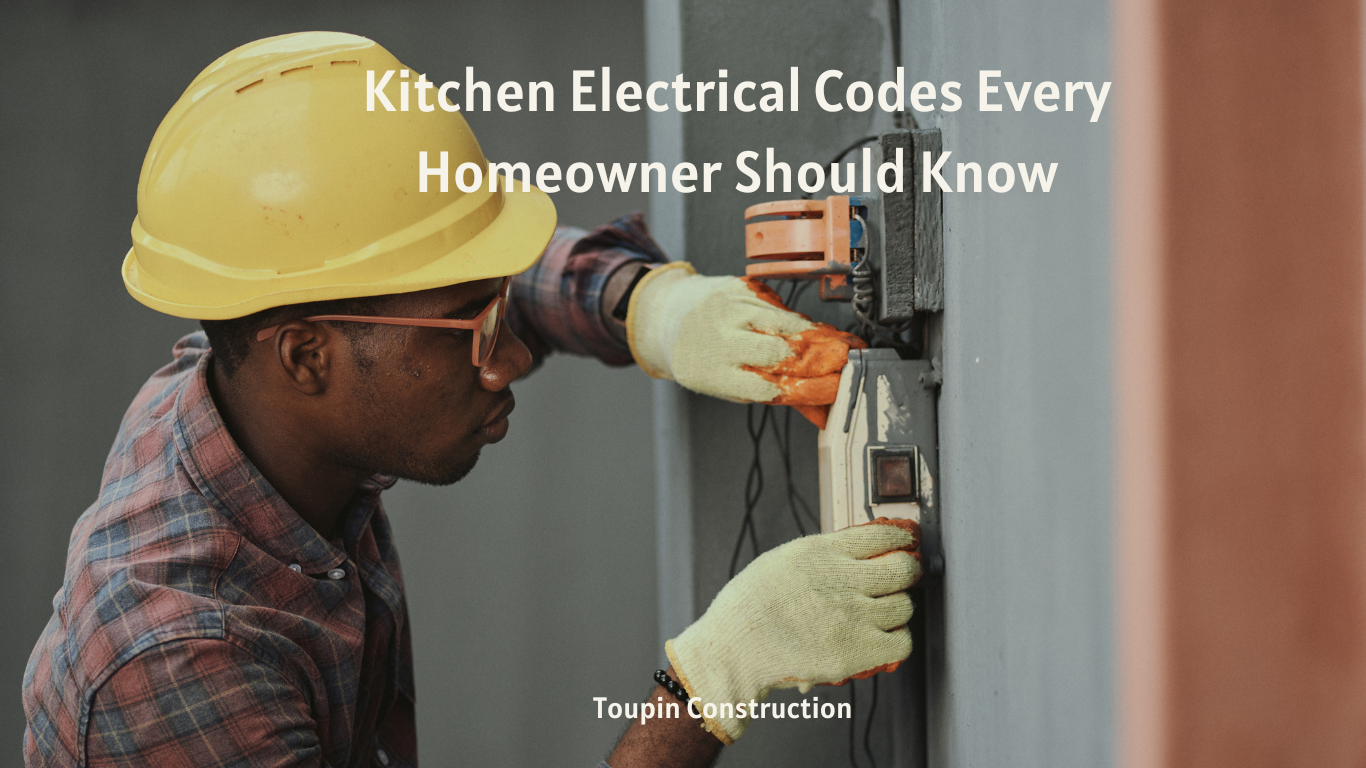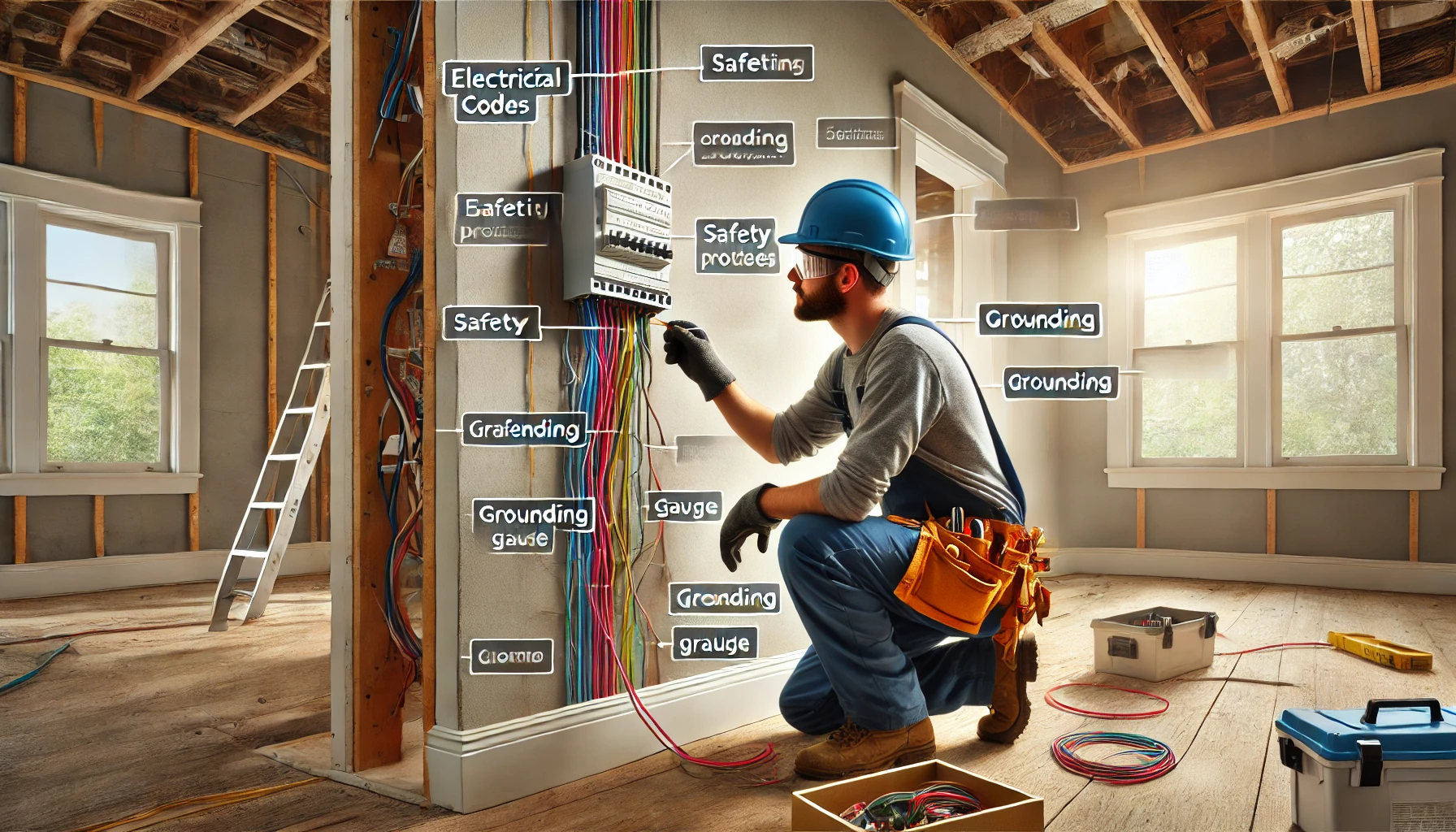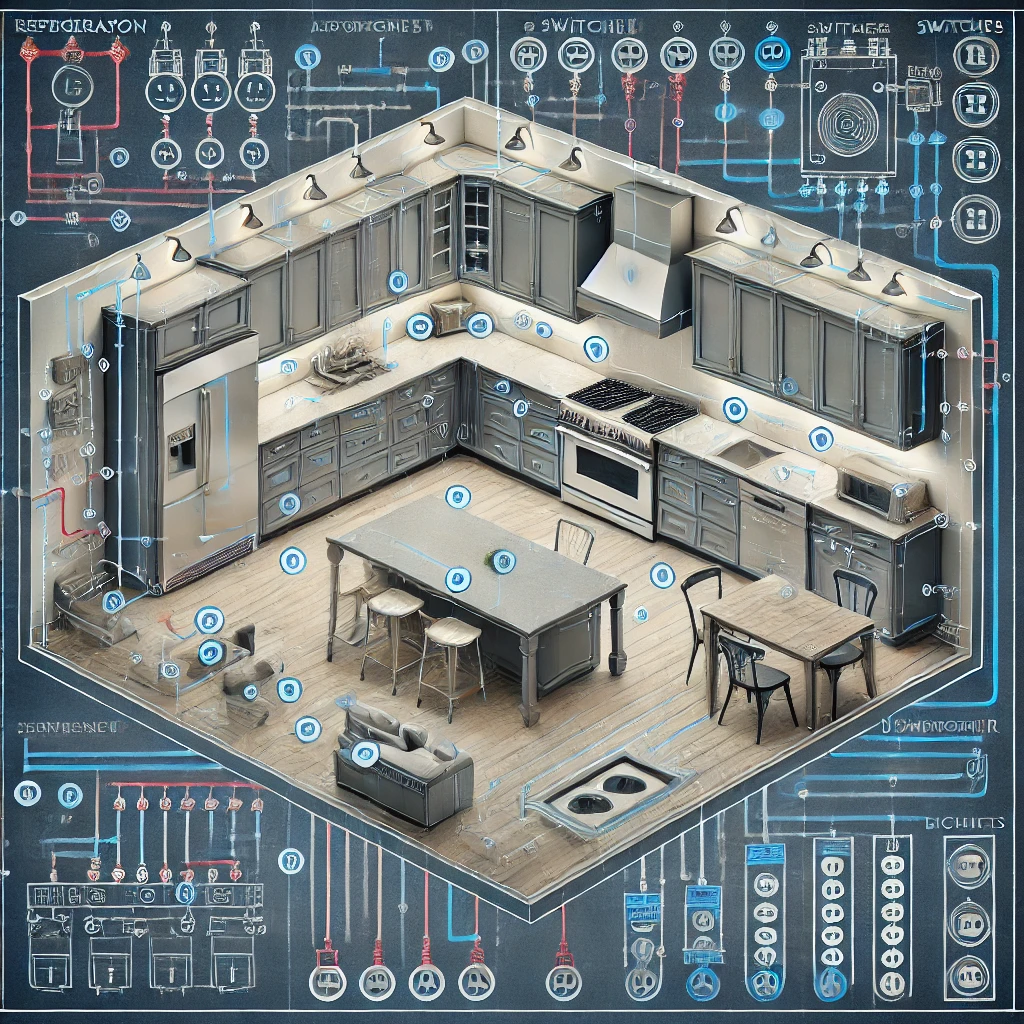By using our website, you agree to the use of cookies as described in our Cookie Policy
The Boss’s Daughter
Kitchen Electrical Codes Every Homeowner Should Know

Time to talk about kitchen electrical codes. Now, let me set the stage—picture a fresh-faced, enthusiastic (and maybe just a bit overwhelmed) newbie walking up to the permit counter, a tiny spark of hope in her eyes but not a clue where to start. Spoiler alert: that newbie was me, and yes, I had a strategy.
When I first started applying for permits in my earlier Toupin Construction days, I quickly learned that navigating building codes, especially those dense electrical requirements, was a language of its own. So, like any resourceful novice, I played a bit of a role. You know the one: wide-eyed, "please help me, I'm just a girl trying to follow the rules" type. A little bit of the "dumb blonde" act, if you will—just enough to encourage those kind permit technicians to show a little mercy and help guide me through the maze.
And let me tell you, it worked.

Here’s a list of key electrical codes for kitchens in California, based on the National Electrical Code (NEC) and California Electrical Code (CEC). Local codes might vary slightly, so it’s always best to consult your local building department before starting any electrical work.
1. GFCI (Ground Fault Circuit Interrupter) Protection
-
Code: NEC 210.8(A)(6)
-
Requirement: All countertop outlets and those within six feet of a sink must be protected by GFCI to prevent electrical shock in wet areas.
-
Example: Imagine you’re blending a smoothie near the sink. If the blender accidentally gets splashed with water and shorts, the GFCI will cut off the power fast to avoid a shock. Any outlet within six feet of a sink needs this safety feature to protect you.
2. AFCI (Arc-Fault Circuit Interrupter) Protection
-
Code: NEC 210.12(A)
-
Requirement: All kitchen outlets need AFCI protection to prevent fires caused by arcing faults in wiring.
-
Example: If a wire in your kitchen wall frays over time and starts sparking, the AFCI will shut off the circuit to prevent a fire. Every outlet in the kitchen needs this to make sure any wiring issues don’t turn dangerous.
3. Dedicated Circuits for Major Appliances
-
Code: NEC 210.52(B) & NEC 422.10
-
Requirement: Appliances like refrigerators, microwaves, ovens, dishwashers, and garbage disposals require dedicated circuits, usually 15-20 amps depending on appliance type.
-
Example: Big appliances, like your fridge, dishwasher, and oven, need their own power sources. Think of it like needing their own lanes on a highway so they don’t overload a single circuit. This setup keeps each appliance running smoothly without tripping other outlets.
4. Countertop Outlet Spacing
-
Code: NEC 210.52(C)(1)
-
Requirement: Outlets must be installed on countertops so that no point is more than 24 inches from an outlet. This often results in outlets every four feet.
-
Example: If you can reach an outlet every two feet along the countertop, you’re good to go! Imagine placing appliances like a coffee maker or toaster; you don’t want to drag cords too far across the counter, so outlets need to be close together—every four feet at most.
5. Two 20-Amp Small Appliance Circuits
-
Code: NEC 210.11(C)(1) & NEC 210.52(B)(1)
-
Requirement: Kitchens require at least two 20-amp circuits to power countertop appliances. These circuits should not serve other areas of the home.
-
Example: Kitchens require at least two 20-amp circuits dedicated only to small kitchen gadgets like mixers, toasters, and coffee machines. This means you can plug in multiple gadgets without tripping the breaker.
6. Lighting Circuit Requirements
-
Code: NEC 210.70(A)(1)
-
Requirement: Kitchen lighting should be on a separate circuit from the small appliance circuits. Overhead and under-cabinet lighting should not share a circuit with countertop outlets.
-
Example: To avoid plunging the whole kitchen into darkness if an appliance trips a breaker, kitchen lights need their own circuit separate from the outlets. That way, your lights stay on even if a countertop appliance overloads.
7. Range Hood Requirements
-
Code: NEC 422.16(B)(4)
-
Requirement: A range hood requires a dedicated circuit, and hardwiring or a receptacle within reach of the hood’s power cord.
-
Example: Your range hood (the fan above the stove) has its own power circuit so it won’t have issues with other appliances. It’s either plugged in near the hood itself or wired directly, so it’s dependable when you’re cooking.
8. Dishwasher and Garbage Disposal
-
Code: NEC 422.16(B)
-
Requirement: Both appliances need separate circuits and must be GFCI-protected if located within six feet of a sink.
-
Example: Both the dishwasher and garbage disposal need their own circuits and must have GFCI protection if they’re close to water. This setup keeps them safe and stable, even with all the water and food waste in the mix.
9. Spacing for Floor Outlets in Kitchen Islands or Peninsulas
-
Code: NEC 210.52(C)(2)
-
Requirement: Islands and peninsulas over a certain size require at least one outlet to meet the code.
-
Example: If you have a large island or peninsula, it needs an outlet too. So, if you want to plug in a blender or laptop while prepping on the island, there’s an outlet right there.
10. Tamper-Resistant Receptacles
-
Code: NEC 406.12
-
Requirement: All outlets in the kitchen must be tamper-resistant to prevent accidents, especially in homes with children.
-
Example: All outlets must have a safety feature that makes it hard to stick anything into them unless it’s a plug. It’s like a child lock for outlets, keeping kids (and adults) safe from accidental shocks.

Going to the city of Walnut Creek and applying for permits quickly became one of my favorite parts of the day, that is until one of my technician friends who worked there called me out on my little act and told me it was time to take a building codes class that he taught at the local college and I did. I took the class and learned so much about California codes and it was so beneficial for me from that point on. If you are wondering about codes or the permit office check your local community development department and reach out to them or leave me a comment and I can try to assist you as well.
‹ Back



